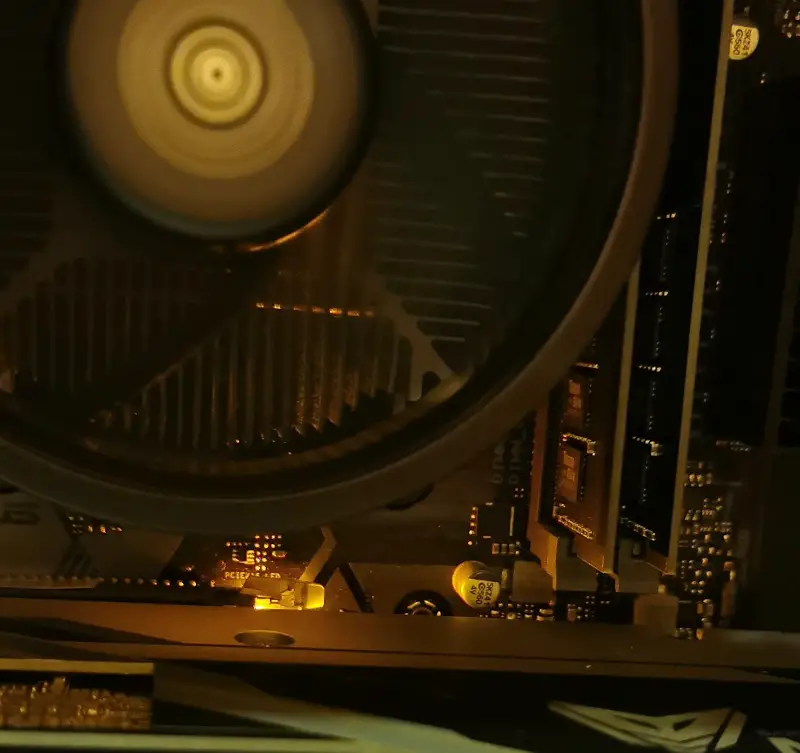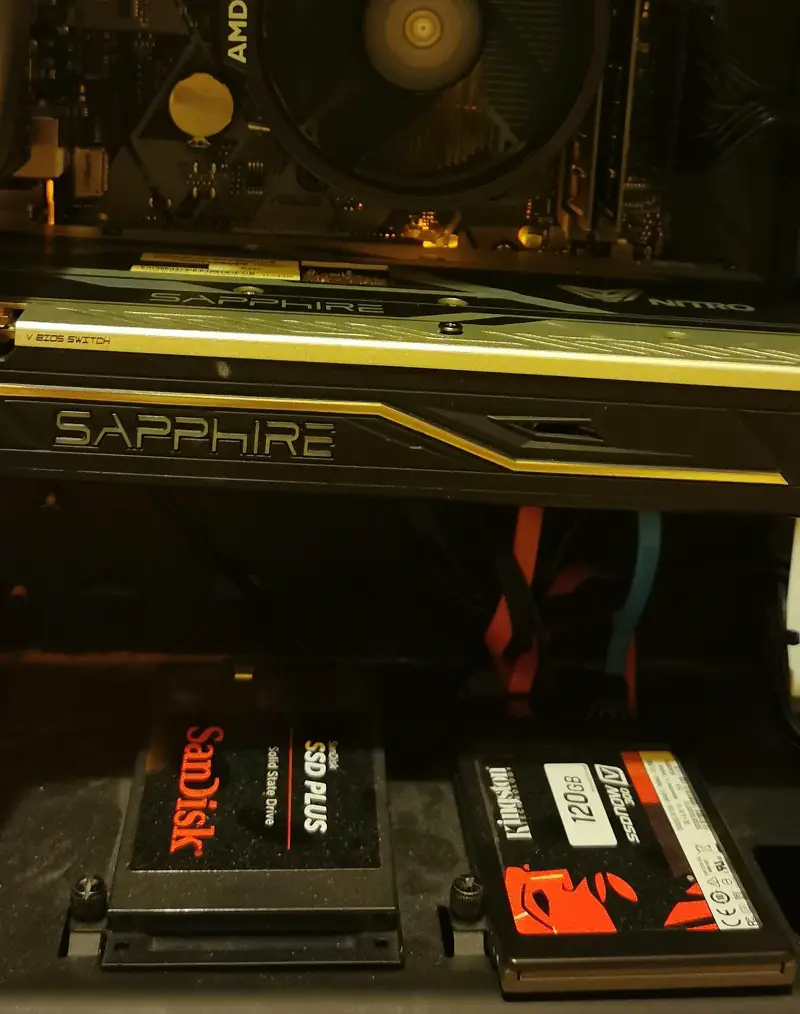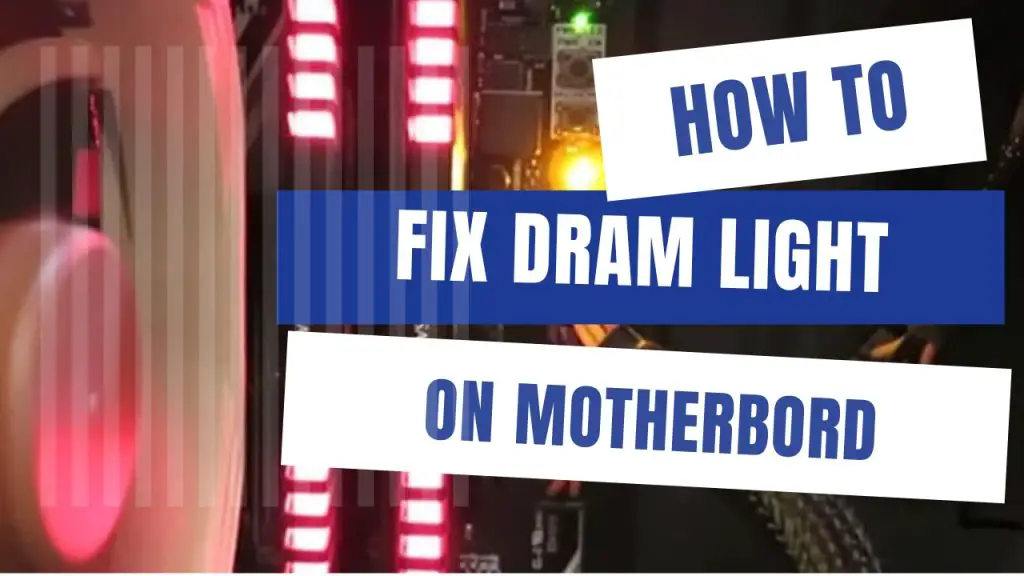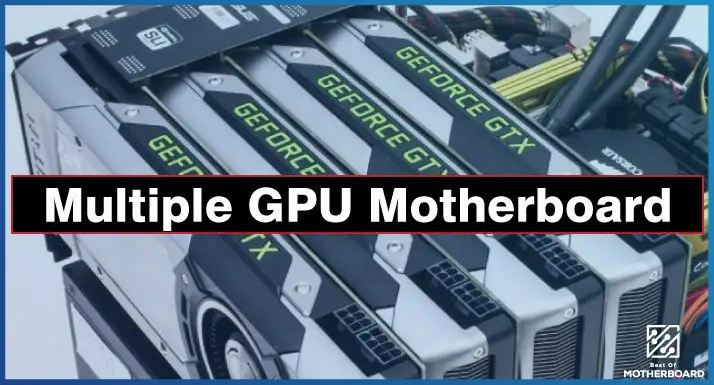When the DRAM light is on, which is typically orange or yellow on most motherboard brands, it indicates that your computer is having trouble initializing or recognizing your RAM. Numerous factors, such as loose RAM modules, flawed RAM modules, improper BIOS settings, a faulty motherboard, or incompatible RAM modules, may be to blame for this.
When you first start your computer, you may notice a DRAM light on your motherboard. This indicates that your computer is checking the integrity of your RAM. If this light is on, it means that your computer found no memory or that there is an error with your RAM.
If you have issues with your DRAM light, we will explain how to troubleshoot it in this blog post. We will also explain everything you need to know to prevent such occurrences in the future. Read on!

How To Troubleshoot and Fix DRAM Light On Motherboard
If you are troubleshooting the issue of the DRAM light on your motherboard, you first should check if your RAM modules are not faulty. If they are not faulty, you should check to make sure they are seated properly. If they seem well seated, check for dirt and clean them.
If that does not work, you can try resetting your system’s BIOS to see if that fixes the problem. If neither of these solutions works, then you may need to replace your RAM modules or your motherboard.
If you have ever taken a look at the back of your computer, you have likely seen a DRAM light on the motherboard. This light indicates that there is an issue with the DRAM or dynamic random-access memory. While this may sound like a serious problem, it is actually quite easy to fix.
In most cases, the DRAM light will come on due to a simple BIOS update. The BIOS is the software that controls the basic operations of your computer, and it is constantly being updated by the manufacturer. By updating the BIOS, you can often fix the DRAM light issue and get your computer running properly again.
Also, the RAM modules may be the problem. If your RAM modules are not correctly installed or they are dirty, you need to remove the dirt and reseat your RAM modules correctly.
If you are not comfortable updating the BIOS yourself, you can always take your computer to a professional and have them do it for you. Either way, the DRAM light issue is easy to fix and should not be a huge problem.

DRAM Light on Asus Motherboard
If the DRAM LED light on your motherboard is lit, it means that the computer is unable to access the system memory. This can be caused by a number of different things, including a faulty memory module, incorrect memory module installation, incorrect BIOS settings, or incompatible memory modules.
Troubleshooting Tips
- If the DRAM LED light is lit, you will need to troubleshoot the issue to determine the cause. This can be done by checking the memory modules to ensure they are properly installed and compatible with the motherboard. If the memory module is not properly installed, reinstall it.
- You should also run a memory test to check for any errors.
- Also, you should check for any dirt. If you have dirt on your RAM, take it out and clean it properly before re-installing it. When re-installing it, make sure to install it correctly.
- If that does not work, replace the DRAM with the memory supported by the Asus motherboard. Follow the installation process in the manual.
- If that does not work, check your memories if you are using more than one. Remove one and reboot to see if the problem is gone. Try the second memory too, and see if everything works correctly.
- If that does not solve the problem, change the memory or repeat the troubleshooting process.
If, after trying all the above troubleshooting tips, you still cannot solve the DRAM light on the motherboard problem, reinstall your CPU or change the CPU.
DRAM Light on Gigabyte Motherboard
The DRAM light on your Gigabyte motherboard indicates that there is an issue with the computer’s memory. This could be due to a number of different factors, including faulty memory modules, incorrect memory configuration, or incompatible memory. If you see this light, you will need to troubleshoot the issue in order to resolve it.
Troubleshooting Tips
There are a few different ways to troubleshoot the DRAM light issue.
- First, you can try reseating the memory modules to make sure they are properly seated in the slots. If you use more than one memory, take one of the memories out and boot again.
- If the problem persists, check the second memory too. If the troubleshooting works, then one of the cards is bad. Also, check if the memories are installed correctly. If not, reseat them correctly.
- You should also try to clean the memory because dirt can cause it to show DRAM light. Take the memory out and clean it, and then re-install it correctly.
- If that does not work, you can try clearing the CMOS and resetting the BIOS to default settings. If the issue persists, you may need to replace the memory modules or the motherboard itself.

DRAM Orange Light on Motherboard
The orange light on the motherboard can come in two forms. The orange light can be static or blinking. If the orange light blinks, it indicates a power supply problem. It means the power supply is not stable or is low.
If the orange light is static, it indicates an issue with the RAM or another component that is not correctly connected to the motherboard. A tightly screwed CPU heatsink can also cause the orange light to show. Loose hardware or wire connections can also cause the orange light to show up. The CPU problem may also cause it.
Troubleshooting Tips
To troubleshoot the orange light on the motherboard,
- check the manual of your motherboard. If your computer is working fine while the yellow light is on, it may not have any problems. So, check your motherboard’s manual first.
- To locate the cause of the orange light, try to check if your computer is working correctly despite the light. If not, try taking the memories out one after the other to see if one of them is the culprit. First, take out one memory and reboot with the remaining memories.
- If the problem persists, repeat the process by removing another memory until you have checked all the memories. Always ensure that one memory stick is in the computer since it cannot boot without memory
. - Note: If the memories are not sitting correctly in the motherboard, the orange light will be on. You can also clean the RAM slot to ensure dirt is not the problem.
- You can also check around the orange light on your motherboard to see if there is a button. Press the button for a few seconds, and it may help fix the issue.
If none of the above tips are working, try resetting your BIOS. If the problem is with the PSU, you should change the PSU.
You can also reset your CMOS by
- Unplugging all the power sources connected to the PSU
- Press the power button 5 to 6 times to discharge the capacitors.
- Look for the CMOS battery on your motherboard and take it out, ensuring you know which side is facing up. The battery is circular and looks like a coin.
- Battery back after a few minutes.
- Reboot your computer and see if the orange light is off.
DRAM Light on MSI Motherboard
If you have an MSI motherboard, you may have noticed an orange or yellow light on the board. This light indicates that there is a problem with the memory on the motherboard. If you see this light, you should check the memory to see if it is properly seated and working. If not, you may need to replace the memory.
Usually, the RAM is the culprit when your MSI motherboard DRAM light is on. So, check your memories to see if they are well seated. Take the RAM out if there is just one and reseat it properly. You can also clean dirt from it because the DRAM light may be a result of dirt on the memory.
If you have more than one memory on your motherboard, you will do well to take one out first and reboot it to see if the light is off. Try the one you removed too to see if the problem is fixed.
If that does not work, since the memories usually occupy the first and second slots, you can insert them in the third and fourth slots to see if the light is off.
If the light is still on, check to see if the RAMs are not broken. If they are broken, you need to replace them. If you have tried everything and the problem is not solved, your motherboard may be having some problems. Or. You should set your BIOS correctly.
You can also clear the CMOS by removing the battery from the motherboard for a few minutes and returning it. But make sure to look at how the battery is positioned, especially the side facing up, before you remove it.
Also, the DRAM light may be caused by the onboard display. What you need to do in this case is take out the graphics card and connect the monitor via the HDMI port on the motherboard. Then go to the start-up menu and search for “device manager.”
Drop down the display adapters, right-click on the CPU, and then select “disable.” Your screen should be black for a few seconds and then go back to normal. Shut off the computer and plug the graphics or video card back in. Then plug the HDMI in through the GPU.
DRAM Light On Motherboard: Yellow
If you see a yellow DRAM light on your motherboard, it means that there is a problem with your system memory or CPU. This can be caused by a number of things, including a bad memory module or a loose memory module. In most cases, you will need to replace the faulty memory module in order to fix the problem.
It can also be caused by a CPU that is not correctly installed.
Usually, the first thing you want to do is check your RAM to make sure it is correctly seated. Reseat it if it is not correctly seated. Also, you may need to clean the RAM of dirt and check if the RAM is not damaged. If it is damaged, you need to replace it.
Sometimes, the yellow light might be a result of an incorrectly installed CPU. Pull the CPU out of the socket after turning off your computer, and then reseat the CPU.
DRAM light on motherboard, no display
Since the PC will not boot if the memories are not working, this problem could be caused by the RAM or a low power supply.
This problem’s troubleshooting may be slightly different from motherboard to motherboard, so you should check your motherboard manual. Follow the instructions in the manual to fix the problem.
If that does not work, follow this basic RAM troubleshooting method:
Troubleshooting Tips
- Check if all your RAM modules are seated correctly. Reseat them if they are not correctly seated.
- Clean the RAM and install it back
- Take out all the RAM modules and insert one, then boot the PC and see if the problem is solved. Try to test all other modules to identify the one at fault. Make sure the RAM modules are seated correctly.
- Also check if your PC is receiving the right amount of electricity. If your PC is not getting the right amount of electricity, make sure it is getting the right amount of electricity.
DRAM Light on Motherboard AORUS
The DRAM light on the AORUS motherboard is an indicator of memory activity. If the light is on, it means that the memory is faulty or not properly installed. Your CMOS may also be the cause. Also, the CPU may be the problem, but this is rare.
The best way to troubleshoot this problem is to reseat your RAM modules correctly. You should also check if the RAM modules are not damaged or dirty. If they are damaged, you should replace them, and if they are dirty, you just need to clean them and install them back.
If the CPU is the problem, you should reseat it correctly. Another way to troubleshoot the problem is to reset your CMOS and BIOS.
Boot Light on Motherboard
If your boot light is still on after booting, it means there is a problem with the storage devices. Your computer may not be configured properly. If it is configured to boot from the wrong drive, you need to get into the BIOS and reconfigure it to boot from the right drive.
Also, if your drive is not connected properly, the light may be on. You want to reseat your RAM modules or clean them.
Also, one of the cables connecting the drive may be bad. You should change the cable.
The boot information on your drive may also be outdated. You will need to use an external drive to download and install the latest drivers.
Finally, the boot drive may be dead. You will need to buy a new drive in this case.
Conclusion
There are a few reasons why your DRAM light might be on. The most likely reason is that you have a bad memory module. This can be caused by static discharge, power surges, or overheating. You can try reseating the memory module to see if that fixes the problem.
If not, you may need to replace the module. Another possibility is that your motherboard is damaged. This can be caused by a manufacturing defect or physical damage. In this case, you will need to replace the motherboard.



![What Are Motherboard Standoffs? [Guide] 7 What Are Motherboard Standoffs](https://bestofmotherboard.com/wp-content/uploads/2022/01/What-Are-Motherboard-Standoffs.jpg)
![Does it Matter Which PCIe x16 slot I Use? [Guide] 8 Does it Matter Which PCIe x16 slot I Use](https://bestofmotherboard.com/wp-content/uploads/2022/01/Does-it-Matter-Which-PCIe-x16-slot-I-Use.jpg)